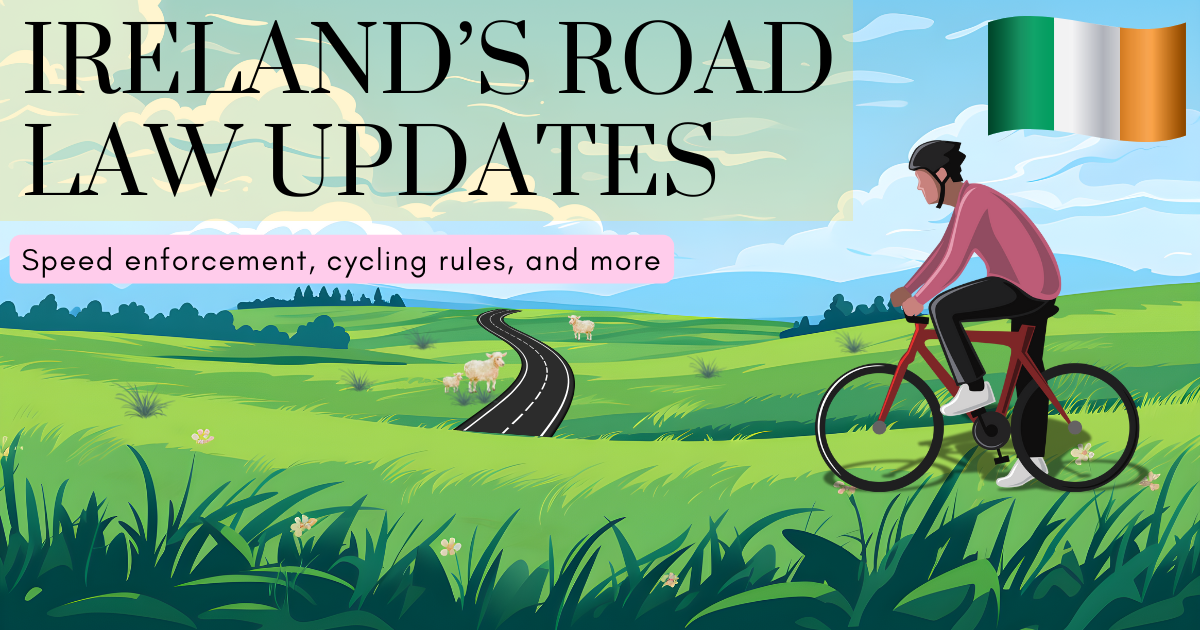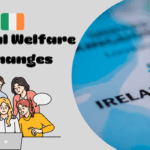Ireland’s road law updates: Speed enforcement, cycling rules, and more. The government of Ireland has established many rules regarding speed enforcement and cycling laws for the safety of its citizens. If you are a cyclist in Ireland, then there are some rules and regulations that you must remember and follow. These major changes started on 7th February 2025, in accordance with S.I. No. 618 of 2024, ROAD TRAFFIC (SIGNS) (SPEED LIMITS) REGULATIONS 2024. To know more about the topic “Ireland’s road law updates: Speed enforcement, cycling rules, and more,” read the complete article.
Ireland’s Road Law Updates
The government decided to establish rules and regulations for cyclists when a judicial decision increased concern about the enforcement of traffic laws in Ireland. In December 2024, Judge Andrew Cody dismissed over 30 speeding cases in Portlaoise District Court, criticizing the fairness of the speed zone in question and ignoring the reality of a number of road deaths in the Portlaoise area in recent years. Seeing this situation, the Irish government made changes in the rules related to cycling, which every cyclist must have knowledge of for their own as well as other people’s safety.
You are legally responsible for keeping your cycle in good working condition. You must cycle with reasonable consideration and be sober enough to control your bike or cycle. It is important to keep your cycle at a relevant speed according to the traffic or type of road you are on. The Road Traffic Acts 1961 (as amended) set out the main provisions for motoring and legislation for bikes. There is also secondary legislation, including the Road Traffic Acts and Road Traffic (Traffic Parking) Regulations (1997-2019), which regulate the behavior of motorists and cyclists.

Speed Enforcement, Cycling Rules, and More
There are certain rules that a cyclist must follow while on the road to avoid fatal crashes and injuries.
Speed Limit Changes
The speed limit on rural, local roads will change from 80 km/h to 60 km/h. Rural, local roads primarily serve local traffic and connect our rural communities. These roads are designated with an ‘L’ followed by a number or do not have a number. As part of the government’s Road Safety Strategy, lowering the speed limit is one of several steps meant to protect all drivers and lower the number of fatalities.
Welcoming the change, Minister for Transport Darragh O’Brien said, “Today’s speed limit reduction will save lives, because driving slower saves lives. Driving at a lower speed means that if you get into a collision, either as a driver or a vulnerable road user, death or serious injury is significantly less likely to be involved in a collision at all.”
Speed Enforcement
If you offend any rule or regulation implemented by the government while cycling, a garda can stop your cycle and fine you for specific charge cycling offenses. Gardai can fine cyclists for the following offenses:
- No front or rear light during lighting-up hours
- Riding a bicycle without reasonable consideration
- Failing to stop for a school warden sign
- Failing to stop at traffic lights when the red lamp is lit
- Failing to stop at cycle traffic lights when the red lamp is lit
- Failing to stop at a stop line, barrier or half barrier at a railway level crossing, swing bridge, or lifting bridge, when the red lamps are flashing
- Cycling in a pedestrianised street or area
The fine for these offenses is €40. If you receive a fixed charge notice, you have 28 days from the date of the issue of the fixed charge notice to pay the fine.
Cycling Rules and Safety
Some of the rules and safety measurements while you are cycling are
Make sure your bike is properly maintained; your tires should be in good condition and inflated to the proper pressure, and your brakes, lights, and bell should all function as intended. Always ensure your saddle is at the correct height.
- Always wear a helmet.
- Make sure you keep to the left. Always look behind and give the proper signal before moving off, changing lanes or making a turn.
- Follow the rules of the road; never run traffic lights or weave unpredictably in and out of traffic.
- Watch your speed, especially when cycling on busy streets and going downhill.
- Don’t cycle on the pavement or up a one-way street.
- Steer well clear of left-turning trucks; let them turn before you move ahead.
- Don’t use a mobile phone or earphone while cycling.



